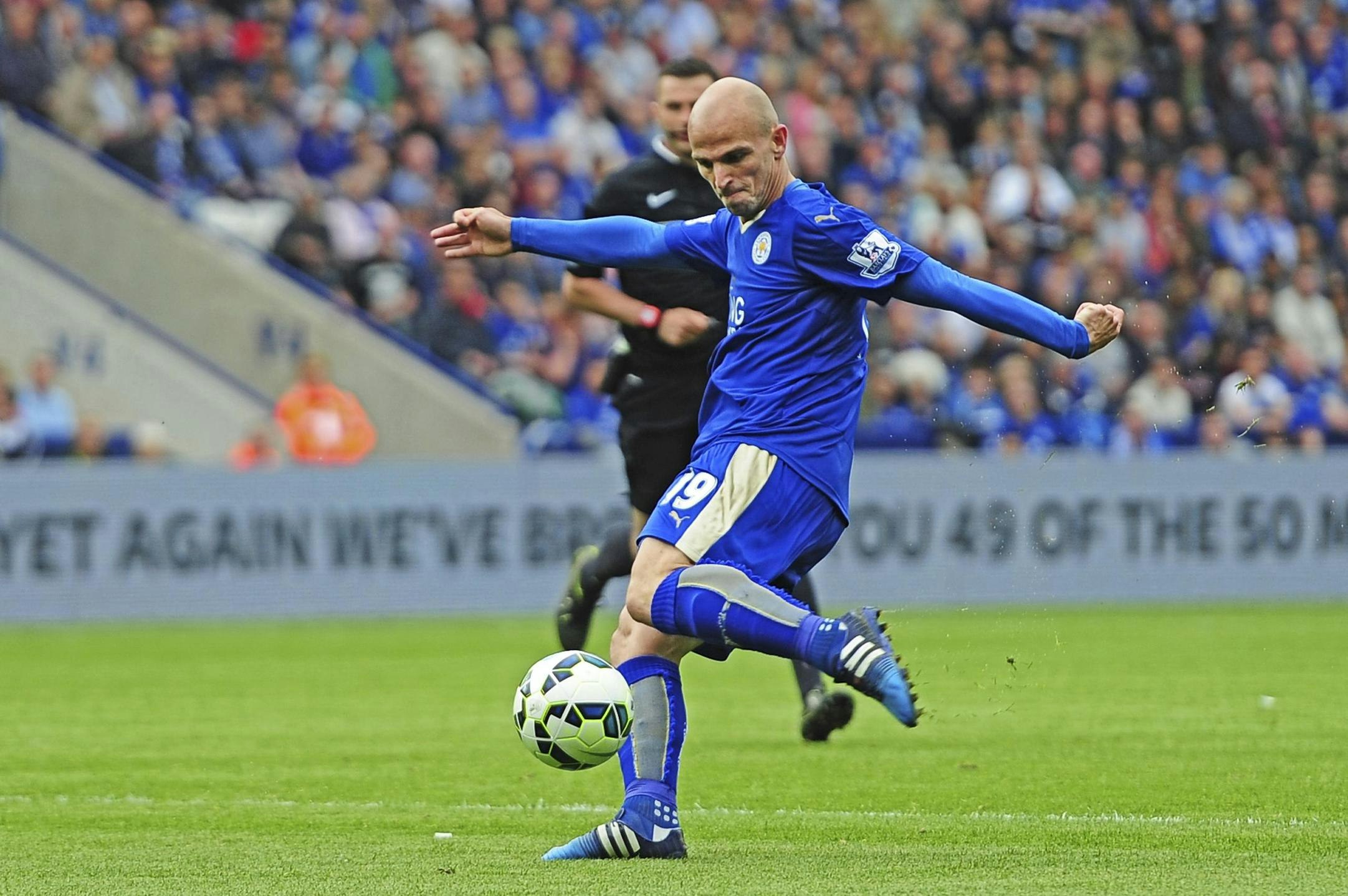This article is taken from the April 2025 issue of The Critic. To get the full magazine why not subscribe? Right now we’re offering five issues for just £10.
What do a Plantagenet king and an Argentinian footballer have in common? Between them, they helped spark one of sport’s most incredible stories exactly a decade ago.
Everyone knows Leicester City won the 2015/16 Premier League at odds of 5,000-1. Much less well remembered is how close they came to not being in the division at all. In March 2015, three-quarters of the previous season gone, Leicester were bottom of the table, seven points from safety and with only five points from their previous nine games. Relegation looked inevitable.
Enter, or rather reinter, Richard III, whose remains had been discovered beneath a car park and were now being buried at Leicester Cathedral in a televised service. Call it coincidence, call it regal intervention — Leicester’s shirt sponsor was King Power, after all — but the reinterment seemed to flick a switch, from winter of discontent to glorious summer.
Leicester dispatched West Ham, West Bromwich Albion, Swansea City and Burnley in quick succession, eventually winning seven of their last nine games to end the season well clear of relegation in 14th place.

Plantagenet providence apart, the great escape was above all down to one man: not the sun of York, but a son of Buenos Aires. Esteban Cambiasso had won 15 major titles in a decade at Internazionale: but at 34 and with his best days behind him, what could such a storied player want with a middling Midlands club in a physically demanding league?
Everything, as it turned out.
“It’s like another cup,” he said when signing a one-year contract. “When you start a season you have an objective, and this [survival] is the objective for us. For me, winning the league with another team is the same now as having the possibility to save Leicester in the Premier League.”
Cambiasso’s left foot was a wand, and from deep in midfield he read the game beautifully. “He didn’t need the legs because he was so clever,” said defender Liam Moore. “He could see a pass way before anyone else. He was from a completely different universe. He showed me how it should be done.” For Cambiasso, all this was second nature. “I’ve never seen football only as the task I was given. I try to understand everyone’s position. Everything has a relationship, and I’ve always wanted to know why.”
The ultimate example had come when Argentina played Serbia and Montenegro in the 2006 World Cup. Cambiasso scored the second of Argentina’s six goals that day, a 24-pass movement in which all but one outfield player touched the ball.
It’s a goal worth two viewings. First time round, appreciate the hypnotic beauty of the build-up: the deliberately languid tempo; the simple but exquisite geometry of the passes; the endless patience involved in slowly dragging defenders out of position; taking them left and right, up and down, probing, waiting and then suddenly striking with the speed and venom of a cobra.
Then rewind and watch Cambiasso alone. As the move begins he jogs into the centre circle, always scanning for teammates and opponents alike. He goes forwards, stops, drifts right, constantly looking for space. He demands the ball from Roberto Ayala, gets it, shimmies to lose his man, passes sideways to Javier Mascherano. A few passes later, he comes left to get the ball from Maxi Rodríguez, rolls his studs over it, nudges it to Juan Román Riquelme, finds a box of space, sees it closed down, moves again. Simple stuff, perhaps: but as Johan Cruyff said, “Playing simple football is the hardest thing there is.”
Finally, as Riquelme and Javier Saviola up the tempo in a flash, Cambiasso’s right on it. He darts towards the edge of the area, feathers a dink with the outside of his foot to Hernán Crespo, follows Crespo into the box, gets the backheeled return, adjusts his stride pattern in a trice, and slams the ball into the top of the net as he falls. Then he’s up and sprinting towards the fans, grabbing the front of his shirt with both hands as he screams his joy: not for himself but for the whole side, the triumph of teamwork, the fons et origo of the game.
It was this which really made Cambiasso so special to Leicester. He was the ultimate team man: heartbeat of the collective, drummer for the band. It was he who scored the opener against West Ham in the first match after Richard’s reinterment, a left-footed thunderbolt hit with such force that it was not just a goal but a harbinger of defiance. The fightback starts here. We’re not going down, and this is why.
It was he who channelled their growing belief as wins started coming. And it was he who, when named the club’s Player of the Year, said, “The most important trophy is that Leicester City play next season in the Premier League. I like the group trophies more than the individual ones.” No wonder the fans gave him his own song, to the tune of Pilot’s “Magic”: “o-ho-ho he’s magic, you know, Esteban Cambiasso.”
He didn’t stay, preferring to head for Olympiacos. Perhaps he wanted to leave on a high rather than risk a less successful second season with another year on the clock. So he wasn’t part of that immortal 2015/16 campaign, but those who did go on that giddiest and most improbable of runs know exactly what they owe him.
And King Richard, too, of course.






